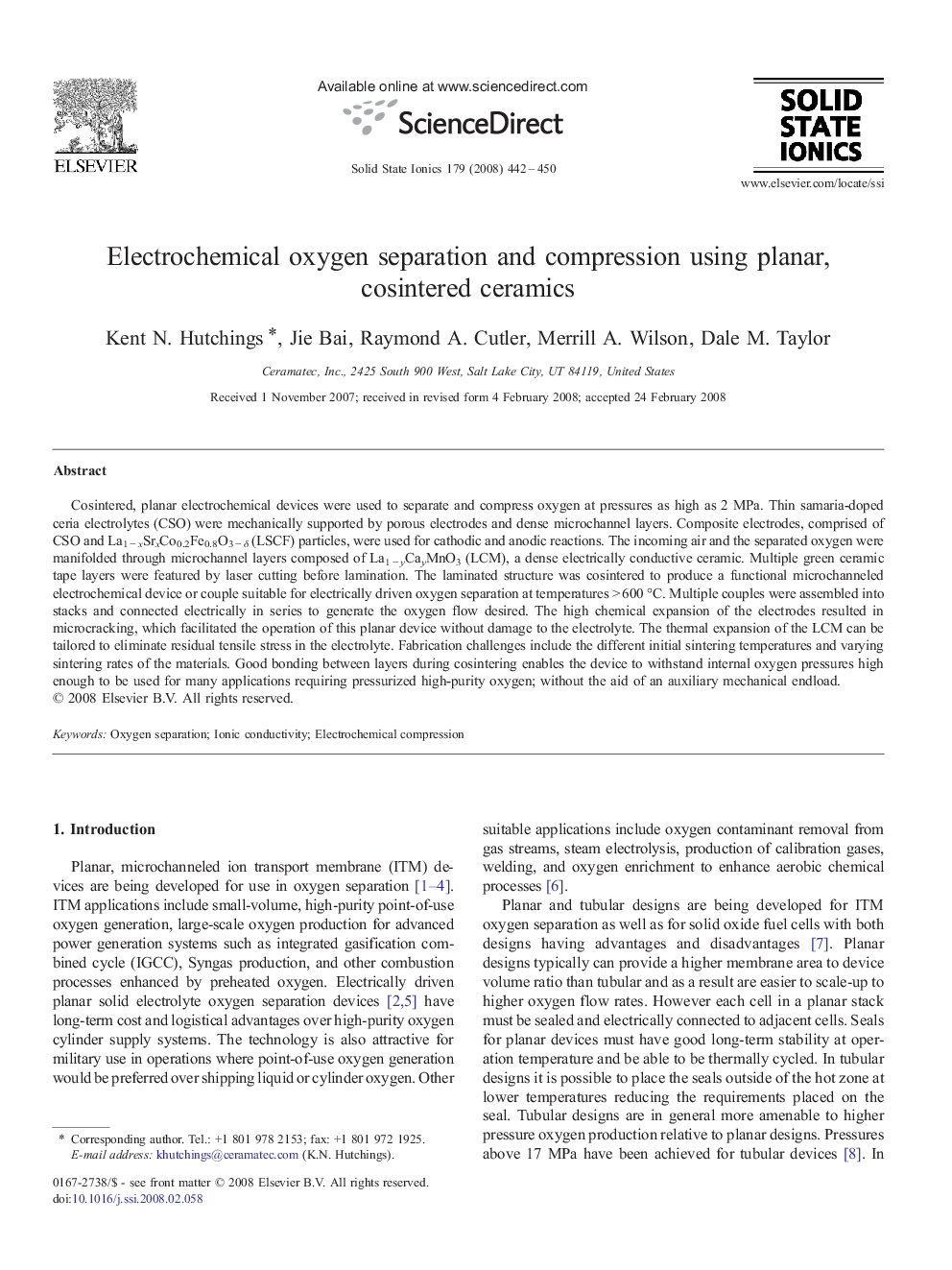| کد مقاله | کد نشریه | سال انتشار | مقاله انگلیسی | نسخه تمام متن |
|---|---|---|---|---|
| 1295260 | 1498376 | 2008 | 9 صفحه PDF | دانلود رایگان |

Cosintered, planar electrochemical devices were used to separate and compress oxygen at pressures as high as 2 MPa. Thin samaria-doped ceria electrolytes (CSO) were mechanically supported by porous electrodes and dense microchannel layers. Composite electrodes, comprised of CSO and La1 − xSrxCo0.2Fe0.8O3 − δ (LSCF) particles, were used for cathodic and anodic reactions. The incoming air and the separated oxygen were manifolded through microchannel layers composed of La1 − yCayMnO3 (LCM), a dense electrically conductive ceramic. Multiple green ceramic tape layers were featured by laser cutting before lamination. The laminated structure was cosintered to produce a functional microchanneled electrochemical device or couple suitable for electrically driven oxygen separation at temperatures > 600 °C. Multiple couples were assembled into stacks and connected electrically in series to generate the oxygen flow desired. The high chemical expansion of the electrodes resulted in microcracking, which facilitated the operation of this planar device without damage to the electrolyte. The thermal expansion of the LCM can be tailored to eliminate residual tensile stress in the electrolyte. Fabrication challenges include the different initial sintering temperatures and varying sintering rates of the materials. Good bonding between layers during cosintering enables the device to withstand internal oxygen pressures high enough to be used for many applications requiring pressurized high-purity oxygen; without the aid of an auxiliary mechanical endload.
Journal: Solid State Ionics - Volume 179, Issues 11–12, 31 May 2008, Pages 442–450